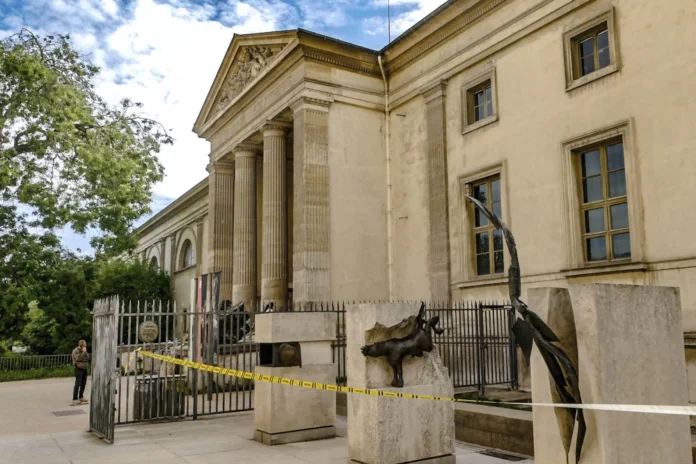
Thieves have stolen raw gold samples valued at nearly $700,000 from the National Museum of Natural History in Paris, officials confirmed on Tuesday. The break-in is the latest in a troubling wave of thefts targeting cultural institutions across France.
The heist occurred in the museum’s Gallery of Geology and Mineralogy in the early hours of Tuesday morning. Security staff discovered the theft and immediately alerted police. While the museum did not provide details on how the burglars gained entry, officials emphasized that the case is under active investigation and that certain information must remain confidential.
In a statement, the museum condemned the act, calling it “an inestimable loss for research, heritage, and public outreach.” Though the market value of the stolen raw gold is estimated at €600,000 ($710,000), experts stress that its cultural and scientific importance far exceeds any monetary calculation.
“This comes at a critical time for cultural institutions, particularly museums,” the museum’s statement noted. “Several public collections have been victims of theft in recent months.” The remark underscores a broader security issue that has unsettled France’s cultural sector, already grappling with multiple thefts and attempted heists in recent years.
The Gallery of Geology and Mineralogy, where the theft took place, houses an extensive collection of rare stones, minerals, and metals. It is one of the highlights of the museum, attracting thousands of visitors annually. Following the incident, the gallery has been closed to the public until further notice, with enhanced surveillance measures now in place.
Authorities are treating the case with urgency given both the monetary and heritage value of the stolen items. Investigators are reportedly reviewing security footage and questioning staff, while also exploring possible connections with recent thefts at other cultural sites across France.
Over the past year, French museums and galleries have faced increasing challenges with theft. Experts point to rising black-market demand for rare minerals, precious metals, and artifacts as a possible driver. Such items, while difficult to sell openly, often end up in illicit private collections or are smuggled abroad.
Museum professionals and cultural advocates warn that the loss goes beyond financial damage. The stolen gold samples were part of a public collection meant to educate future generations about Earth’s natural history. “These are not mere commodities,” one cultural heritage specialist said. “They represent centuries of scientific discovery and public engagement.”
The National Museum of Natural History, one of France’s oldest scientific institutions, has pledged full cooperation with authorities to recover the stolen samples. For now, the museum community and public are left grappling with yet another reminder of the vulnerabilities facing cultural treasures in an era of rising global theft.
As the investigation unfolds, the theft has sparked renewed debate over whether current security systems at cultural institutions are sufficient to protect heritage collections, particularly as thieves appear increasingly organized and determined.